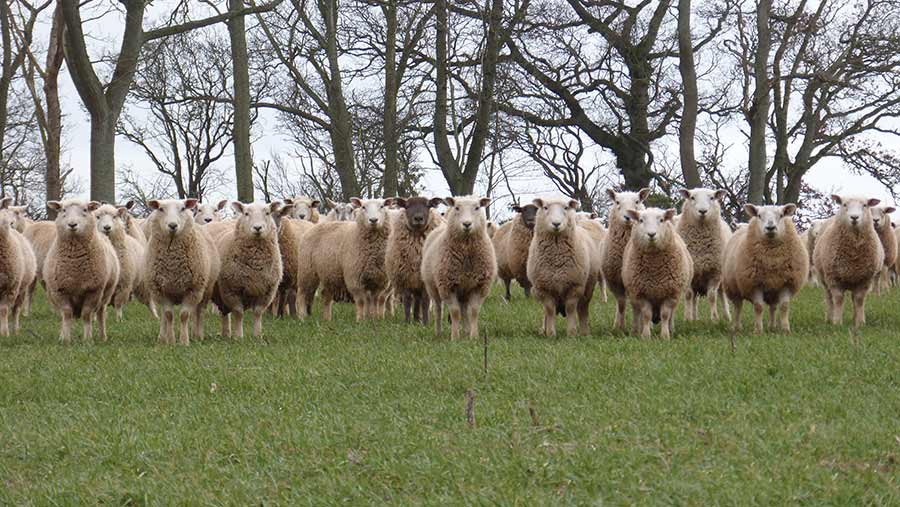Record-breaking lamb trade hits peak but stays above £8/kg
 © MAG/Michael Priestley
© MAG/Michael Priestley The spike in demand for lamb from Easter and Ramadan may be passing, with Eid al Fitr ending proceedings on 10 April. However, deadweight lamb prices have continued to hold strong, with tight supplies carrying the trade.
Deadweight lambs averaged 829.5p/kg this week, back from the March peak of 838.8p/kg, but by historic standards the lamb trade remains incredibly firm, with prices up 224p/kg on year-earlier levels.
Jonny Williams, joint operations director of marketing co-operative Farmstock Scotland, said the lamb trade is very volatile but is being driven by an emerging shortage of hoggs.
See also: Soaring lamb trade reaches new record high of £8/kg
“We’ve got massive demand from the Continent for exports of UK lamb, so we’ve seen these huge prices never seen before.
“Instinctively, you think wow, this is great for the industry, but obviously you need to see what’s going to happen in the long term to see what the implications are for the next lamb crop,” he said.
The latest figures released by Defra show that the total number of sheep and lambs fell 5.1% on the year as of 1 December 2023, which represented a drop of 1.14 million.
The breeding flock fell by 4.3% to 13.8 million ewes in December. This represents the smallest UK breeding flock on record from Defra statistics dating back to 1996.
AHDB estimated weekly slaughtering figures for GB showed throughputs in March were consistently lower compared with the previous year, averaging about 200,000 head a week.
Mr Williams added: “In the short term, I think prices will stay well above the five-year average.
“We are going to have a late spring because of the terrible weather we have had, so the spring lambs aren’t going to come into the marketplace in any significant volumes any time soon. Hogg numbers are very tight and the ones that are there are struggling to finish in the weather.”
Imports of lamb to the UK and EU from the southern hemisphere have also been affected by disruptions to shipping through the Middle East, which has added further support to markets.
Auction marts
Auctioneer Martin Lloyd said the lamb trade at Melton Mowbray on 9 April had been buoyant.
“We still averaged 390p/kg for the hoggs, which is unheard of really this time of the year.”
He said trade was a little bit back because it was the week of Eid al Fitr, but hoggs were still selling at £170-£180 a head, with some going for more than £200 a head.
He added that new-season lambs were starting to come through, but in small numbers.
“We are in the middle of April now – we should be seeing more than we’ve got. Schmallenberg has given the early lambing flock a fair hammering.”
Cull ewes
Cull ewes averaged £137 a head at auction markets in England and Wales for the week ending 6 April.
Mr Lloyd said the better continental ewes were up at £170-£200 a head, while the best heavy Texels were £250-£260 a head.
He added that ewes might be harder to get hold of in the short term, as a flush may not come for a little while yet.
At Welshpool Livestock Sales on 8 April cull ewes averaged £120 a head, with a top price of £268 a head.
Welshpool also sold ewes with lambs at foot to an average of £87.60 a head, with the very best trading at £120-£140 a head.
